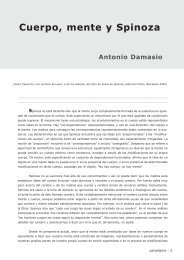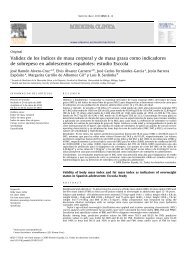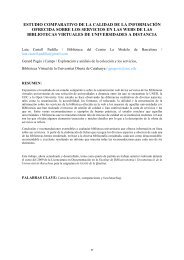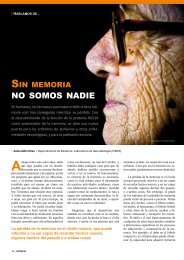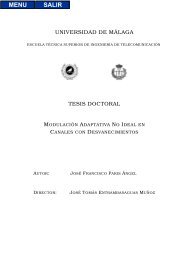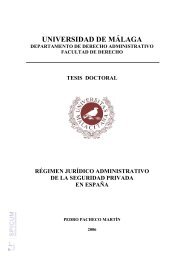Papel de las actividades superóxido dismutasa y catalasa en la ...
Papel de las actividades superóxido dismutasa y catalasa en la ...
Papel de las actividades superóxido dismutasa y catalasa en la ...
Create successful ePaper yourself
Turn your PDF publications into a flip-book with our unique Google optimized e-Paper software.
INTRODUCTION<br />
1. AQUACULTURE. THE CULTURE OF SOLE<br />
(Solea s<strong>en</strong>egal<strong>en</strong>sis, Kaup, 1858)<br />
According to Food and Agriculture Organization of the United Nations (FAO) the<br />
Earth is inhabited by nearly 6.5 billion people and the popu<strong>la</strong>tion will increase to<br />
betwe<strong>en</strong> 9 and 10 billion by 2050. This concerns, particu<strong>la</strong>rly people p<strong>la</strong>nning on how to<br />
feed the future world (FAO, 2005<br />
).<br />
Fish is one of the most wi<strong>de</strong>ly used low-cost protein sources in many parts of the<br />
world. However, it is clear that the avai<strong>la</strong>bility of fish harvested from capture fisheries<br />
to support the growing <strong>de</strong>mand for fish protein will be ina<strong>de</strong>quate. Thus, the world<br />
needs to turn to producing fish, i.e. aquaculture. FAO <strong>de</strong>fines aquaculture as the<br />
culture of aquatic organisms, including fish, mollusks, crustaceans and aquatic p<strong>la</strong>nts.<br />
Nowadays aquaculture industry p<strong>la</strong>ys an ess<strong>en</strong>tial role in feeding future world.<br />
In southern European countries, aquaculture production is conc<strong>en</strong>trated on shore<br />
based cultivation of gilthead seabream (Sparus aurata, L.) and seabass (Dic<strong>en</strong>trarchus<br />
<strong>la</strong>brax, L.). Due to high production, markets have begun to be saturated. Investigation<br />
of pot<strong>en</strong>tial new species for aquaculture is one of the strategies to increase market<br />
opportunities. S<strong>en</strong>egalese sole (Solea s<strong>en</strong>egal<strong>en</strong>sis, Kaup 1858) is a common high-value<br />
f<strong>la</strong>tfish in Southern Europe, is well adapted to warm climates and is commonly raised in<br />
the ext<strong>en</strong>sive earth<strong>en</strong> ponds along the south coasts of Portugal and Spain (Dinis et al.,<br />
1999; JACUMAR, 2005).<br />
Regardless of the pot<strong>en</strong>tial economic importance of the culture of this fish species<br />
(Dinis et al., 1999; Ims<strong>la</strong>nd et al., 2003) data about the susceptibility of captive<br />
S<strong>en</strong>egalese sole to fish pathog<strong>en</strong>s are still scarce. The control and prev<strong>en</strong>tion of<br />
infectious diseases is a major goal in farmed sole. Several authors have reported<br />
differ<strong>en</strong>t diseases and pathog<strong>en</strong>ic microorganisms (Rodríguez et al., 1997; Zorril<strong>la</strong> et al.,<br />
1999; Magariños et al., 2003; Arijo et al., 2005). Although, some studies reported Vibrio<br />
harveyi and T<strong>en</strong>acibaculum maritimum iso<strong>la</strong>tion from diseased fish (Zorril<strong>la</strong> et al., 1999;<br />
Cepeda and Santos, 2003), pseudotuberculosis, caused by Photobacterium damse<strong>la</strong>e<br />
71




